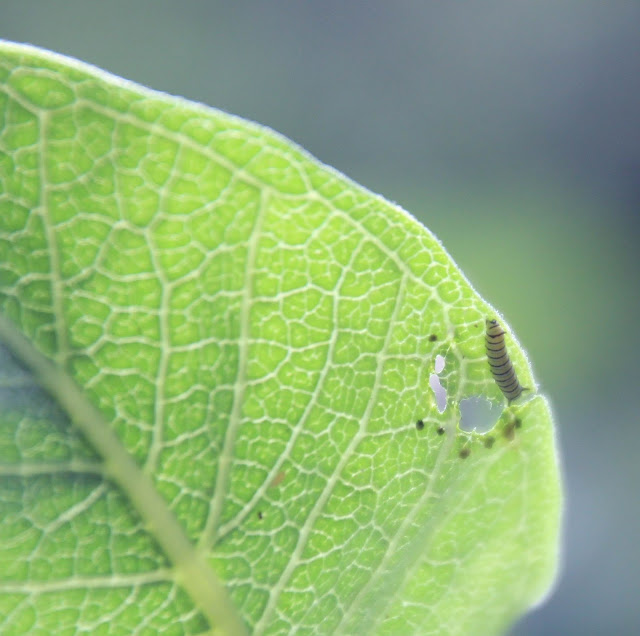By Beth Sullivan
It’s been a bit too
hot to really enjoy walking through bright sunny fields, but they are
busy and full of life.
 |
| The flower of the Common Milkweed is really very pretty, and welcomes great numbers of insect pollinators. |
The Goldenrods, Joe-Pye
weeds, and IronWeeds are just beginning to bloom adding color to
the white of Queen Anne’s Lace and later season greens . The
grasses add their own fine textures with seed heads. As the fields
become havens for pollinators-bees of all kinds, butterflies, flies,
moths and numerous bugs and beetles-the birds are enjoying a feast,
flying and foraging over the meadows catching their food on the wing.
It is a joy to watch the Swallows and Martins at Knox preserve,
swooping and soaring over the fields.
 |
| A wetland full of Swamp Milkweed is a beautiful haven for Monarch Butterflies. |
Many types of Milkweed
Included in these fields are the flowers
of the Milkweeds. Its family has many members. The
bright orange Butterfly Milkweed has a pretty long flowering season;
there may be some still visible in the fields but most have gone to
thin pods. The same is true of the Common Milkweed with its looser
pinkish flowers and plump warty pods. Right now the Swamp Milkweed
is in full flower, bright pink and with noticeably fuzzier stems and
leaves.
 |
| Orange Butterfly Milkweed is a favorite. |
 |
| The Swamp Milkweed is supporting a full-sized caterpillar, and a population of Aphids. |
What they all have in
common is their importance to Monarch butterflies. The flowers are
attractive to many species, and those bees and flies also contribute
to pollination. For the Monarch though, these plants are essential
to their life cycle. All members of the Asclepias genus contain a
chemical, a cardiac glycoside, that is considered toxic to most
other insects, birds and people. We would not do well to add
Milkweed leaves into a wild salad. But not only do the Monarch
caterpillars eat the leaves, and survive, they are protected by that
chemical as it is stored in their bodies, and predators become
sickened if the caterpillar is eaten. The chemical protection
continues into the adult Monarch, and over time, birds have learned
not to eat the “Black and Orange” butterfly.
 |
| Immediately after hatching, this caterpillar begins to eat and consumes the protective chemical in the Milkweed leaf. |
The Monarchs have
suffered greatly over the last decade, and their numbers have dropped
dangerously. In part it is due to their wintering habitat in Mexico
being destroyed. In part it is due to decreased availability of
Milkweed here in the US. So, in an effort to support a much beloved
butterfly, we are encouraging Milkweed to become established in
whatever areas are suitable.
Not just for Monarch Butterflies
It has also been
interesting to discover other creatures dependent on the Milkweed.
One is a Milkweed Beetle, also colored red with black dots. They
live in and around the Milkweed’s main stem and don’t seem to do
a lot of damage. Aphids often colonize the Swamp Milkweed, and their
sheer numbers, sucking sap from the bases of flowers, often does
cause a decrease in seed production. There is also a fuzzy
caterpillar, a Milkweed Tussock moth caterpillar which is also
colored orange and black. When they attack a plant, they devour it
completely, and I have witnessed them eating leaves that contain
monarch eggs and small caterpillars. Another surprise finding was
that there is a species of snail that seems to favor milkweed leaves.
I can’t be sure if they are feeding on the leaves, or something
else on the leaves, but we have seen this in several instances.
 |
| The Milkweed Beetle is another orange and black insect closely associated with this plant. |
 |
| A small land snail is often found on Milkweed leaves. |
Take some time to walk
through a meadow with Milkweed. Think of all the associated wildlife
with just this one special plant. Maybe you can find a place for a
patch in your own yard.
 |
| Mating Monarchs are a sign of hope for their future. |
Photographs by Beth
Sullivan.

No comments:
Post a Comment